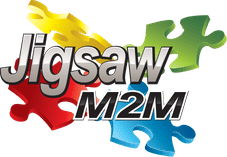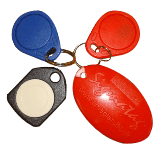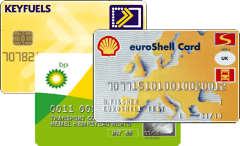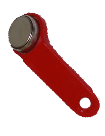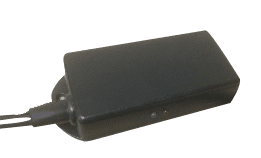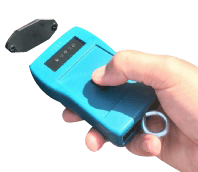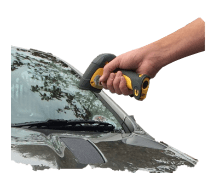Advanced Fuel Management
ID Devices
Jigsaw M2M offers a wide range of identification devices for vehicles as well as drivers and fuelers. Find out more about the products that we offer now.
Definition of Terms
-
Automatic Mileage Capture (AMC)
The capability to gather mileage or engine hours without the need for human intervention.
-
Automatic Vehicle Recognition (AVR)
The capability to ID a vehicle without using a handheld identification device.
-
CAN Bus
A two-wire control network used to manage every part of a modern vehicle—from brakes to indicators. Drivers have the option to add devices that can read mileage from the CAN Bus and convert the data into mileage pulses.
-
On Board Device (OBD)
A small electronics box that manages the function of an identification device in a vehicle. It normally waits for an ID request prompt while counting mileage pulses from a transducer.
-
Radio Frequency ID (RFID)
This is a handheld, contactless tag where data is read using a device that has no direct electrical connection.
RFID Tags
Among the options for ID devices, RFID tags are commonly used for drivers and vehicles in fuel management systems. The gadget is resistant to dirt or water and doesn’t need batteries to operate, making it ideal for long-term use.
If you’ve been using RFID tags from a previous FM system, our team at Jigsaw M2M can configure your device. This way, you can make the most out of your legacy tags and have a cost-efficient alternative to a full upgrade.
Magnetic Cards
For users who have been issued magnetic cards during off-site purchases, you can still use them once you upgrade to the Jigsaw M2M system. If only a part of your fleet has this device, you have the option to get RFID tags for the remaining vehicles. This way, two reader types of IDs will co-exist in the same terminal.
Dallas Keys
If you’re looking for a way to lower the costs of a Jigsaw upgrade, your existing Dallas reader can be of great help. The keys will be retrofitted so you can eventually convert the remaining devices into RFID tags.
Jigsaw Midas AMC
This system uses an OBD and a key that’s issued to every driver or fueler. To extract supply, the user simply touches the Midas tag on the vehicle then the fuel island terminal.
The Midas touch tag contains the driver’s ID number. So, when it comes in contact with the vehicle, the auto’s ID and mileage will be written on the device. All data will be passed to the terminal on the second touch.
Jigsaw EasyFuel AVR
Among all options, it’s considered as one of the most secure methods to fuel a vehicle. As its name suggests, the user simply needs to insert the nozzle in the filler neck of the auto, and the EasyFuel system will do the rest.
Jigsaw FuelGuard AMC
This ID device may be used with handheld tags, magnetic cards, or any other gadget that Jigsaw M2M offers. Users can capture mileage information while fuel is being extracted from its source.
For mileage capture, the FuelGuard may require a source of pulses that is proportional to the distance travelled by the vehicle. Users might need a tachograph or a CAN Bus interface to gather these data.
Jigsaw FuelWand
The FuelWand is mainly used in mobile refuelling systems or in vehicles where RFID tags are permanently installed. First, the hose will be deployed from the bowser. Then, the FuelWand will read the data from the tag before the fuelling process starts.
Laser Plate
A battery-powered reader will be used to recognize a bar code that’s permanently attached to a vehicle. The device is linked to the fuel island terminal using Bluetooth radio so no wires will get in the way.
When not in use, the reader is stored in a lockable, weatherproof housing. It’s placed in a charging station so it will be ready once the device needs to be used again. The scanner may also be utilised to read printed bar codes to identify vehicles and limit the fuel supply that will be drawn out from the terminal.
Jigsaw Teletag AVR
The Jigsaw Teletag AVR is often used in settings where a constant stream of buses that need refuelling. Each auto has a fitted long-range ID tag which enables the reader to recognize if the vehicle is approaching the terminal.
Once the auto stops, the pump starts to fuel the vehicle. The fueler may also hold a tag so that no gas may be drawn out unless there’s an authorised staff manning the terminal. So, if you’re looking to have an automated system, you might want to consider fitting a FuelGuard OBD onto your vehicle.
Personnel IDs
Typically, companies issue RFID devices to their staff so they can have access to site facilities. In many cases, the Jigsaw system can read these tags so it can be another method to identify drivers when they fuel vehicles.
If you want to know whether your personnel’s IDs can be used in this method, feel free to reach out to us. We can check if they can be recognized by the fuel island system and if they can be an alternative driver’s ID.
Automatic Mileage Capture Using a Vehicle Tracking System

While this is not a standard identification method, our team is capable of adding an Automatic Mileage Capture feature to any of Jigsaw M2M’s ID devices. We can connect your telematics (vehicle tracking) provider’s web service to our own server.
The usual fuelling process will be followed, but the driver will not be required to input the mileage. Afterwards, the transaction will be sent to our server so our system can request mileage data to your telematics provider.
Users won’t have to worry about the accuracy of mileage data during the time of fuelling since a vehicle sends an update to its own server whenever the auto hits a full stop. If not all of your vehicles have tracking systems, it shouldn’t be a big issue. The rest of your fleet can use Typed Mileage ID or FuelGuard Auto Mileage Capture instead.
However, it’s important to note that not all telematics companies offer an automated gathering of mileage data. Some of them may be more accurate than the others when it comes to matching distances from the actual odometer.
Systems linked to a vehicle’s CAN Bus give the best results as the measurements are the same as the actual odometer. This ensures that accurate data will be sent to the server.
Overview of the Auto Mileage Capture From Telematics

-
The vehicle stops at the fuel island. When the auto turns of its ignition, the telematics system will send an updated position and mileage information to its server.
-
A vehicle ID will be presented at the Fuel Control Terminal.
-
The terminal will authorise the ID online via the GSM network.
-
The fuelling details will be forwarded to Jigsaw’s Fuel server real-time.
-
Once the Jigsaw server receives the data, it will connect to the telematics provider’s system using the vehicle ID.
-
When the telematics server sends the mileage data, it will be added to the fuelling transaction on the Jigsaw server.
